

Gas or wood fired beta, 190mm bore, 92mm stroke, 2.61 litre swept volume.
18.1 (beta) is an attempt to improve working fluid transfer: Direct crank-controlled Stirling engines transfer 50% or more of their working fluid (air in this case) from the hot space to the cold before expansion is completed, cooling it even as it is expanding against the piston to make power. This reduces efficiency and power. Whether of the alpha style such as 17.2, Whispergens and Riders, or betas such as 14.1, Ericssons and Heinricis, with simple crank control there is no way to improve this transfer without making the reciprocal transfer (from cold to hot) much worse. On balance, with direct crank control, they run best by taking these losses during the expansion stroke rather than during compression, because getting heat out of the working fluid is always more difficult than getting heat into it- by about 3/1 as a rule of thumb.
15-4 (beta) uses a star linkage to actuate the piston and displacer that provides better working fluid transfer than direct crank control (by the visuals anyway).
18.1 has the piston controlled directly by the crank while the displacer is operated by a variant of the Whitworth quick return linkage. A section of its scotch yoke is curved rather than straight which causes the displacer to follow the piston up for all the power stroke, then return down rapidly to transfer almost all the working fluid from the hot space to the cold before the piston begins its compression (cooling) stroke. To facilitate testing, 18.1 has been built with alternative linkages to allow quick changeover from the curved scotch yoke displacer control back to simple crank control without altering other parameters such as heating, cooling, swept volume etc. This is so that any change in output can be attributed directly to the transfer effect.
18.1’s extended displacer rod sliding in a top mounted sleeve keeps the displacer centralised in the cylinder (always a challenge) but makes the engine 10% taller.
Working fluid transfer appears almost perfect in 18.1, but the >2kgm displacer accelerates and decelerates rapidly during its down stroke, which imposes more than three times the mechanical loads on bearings and links compared to simple crank control at the same rpm. This makes 18.1 jump around and develop an ominous clonk, limiting rpm to around 200 (max power would probably be at around 300rpm).
Unfortunately, this has precluded a truly definitive test but has raised strong doubts as to whether this linkage offers any improvement.
16.3 was then rebuilt to 16.4 with an alternative linkage enabling equivalent transfer geometry but with lower instantaneous loads. This didn’t show any improvement either, causing a thorough review of what effective transfer is rather than what looks right.
PETER LYNN, ASHBURTON, NEW ZEALAND to August 2025.
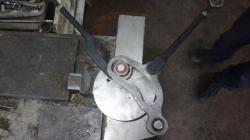
LSM 18.1 displacer quick return mechanism
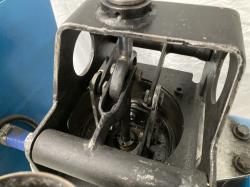
LSM 18.1 showing extended rod for better displacer centralising
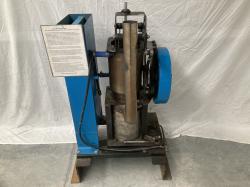
LSM 18.1 with modified Whitworth quick return mechanism for displacer control
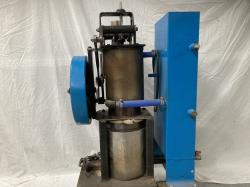
LSM 18.1 with quick return dispalcer, side view
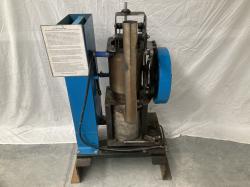
LSM 18.1 with quick return displacer and extended displacer rod, chimney side